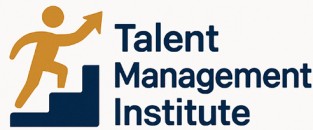
Understanding the Role of a CTO
Grasping the CTO's Strategic Functionality
Understanding the Chief Technology Officer (CTO) role is paramount to initiating effective succession planning. As technology becomes integral to business success, the CTO's responsibilities have broadened significantly. More than just a tech expert, the CTO sits at the intersection of technology and business strategy. They are pivotal in steering technology-driven initiatives that align with the company’s long-term goals. In many organizations, the CTO role embodies several critical functions:- Technical Innovation Leader: Driving innovation through new technologies and ensuring their integration into the organization's operations effectively.
- Strategic Partner: Collaborating with other senior leaders to craft strategies that leverage technology for competitive advantage.
- Leadership in Talent Development: Mentoring and developing a team of future leaders, ensuring continuity and adherence to best practices in technology management.
Identifying Potential Successors
Spotting the Future Tech Leaders
Identifying potential successors for the CTO role is a critical aspect of succession planning. Given the rapid pace of technology evolution, it is crucial for companies to ensure that leadership roles, particularly that of a CTO, are filled by individuals who possess the requisite skills and vision for the future. Effective succession requires a clear identification of high-potential employees who can assume this pivotal role.
Begin by evaluating the skill sets within your organization. Look for employees who have shown strong business acumen, technological expertise, and leadership qualities. A succession plan needs to outline the necessary skills and experiences that align with the company’s vision and strategies.
Involve current CTOs and other technology leaders to mentor emerging talent. Current leaders play a vital role in training their successors by sharing insights and experiences. This knowledge transfer is integral in preparing potential successors for the responsibilities of the CTO position.
In addition, organizations should implement talent management strategies that include regular assessments of leadership capabilities. Through these assessments, companies can identify employees who demonstrate the aptitude for growth and leadership development.
It's important to maintain an ongoing dialogue about career aspirations with candidates who are considered for succession. This ensures alignment between personal goals and organizational needs, resulting in a smoother transition when the time comes for the leadership shift.
By properly identifying potential successors early in the planning process, companies can better prepare for the eventual transition, minimizing disruption and fostering a steady path towards sustaining leadership continuity.
Developing Leadership Skills
Cultivating Future Leaders within Your Organization
Developing leadership skills is a cornerstone for effective succession, especially for the critical role of the CTO. As technology companies continue to evolve, nurturing talent and facilitating leadership development become imperative for long-term stability and growth. In preparing potential successors, it is essential to invest in comprehensive talent development programs that focus on both technical and soft skills. The complexity of the CTO role often requires a deep understanding of technology along with strategic decision-making and effective team management. Here are some considerations for cultivating future leaders:- Customized Training Programs: Tailor training initiatives to bridge the gap between current skills and those required for leadership roles. This might include project management, strategic thinking, and innovation-driving capabilities.
- Knowledge Transfer Opportunities: Encourage current leaders, including the outgoing CTO, to engage in knowledge sharing with high potential employees. This can happen through mentorship programs, job shadowing, or cross-functional collaborations.
- Real-world Leadership Experience: Allow potential CTO successors to take part in decision-making processes or lead critical projects. Engaging them in these real-world scenarios equips them with the experiences needed to handle future challenges as a CTO.
Creating a Succession Plan
Crafting an Actionable and Resilient Succession Strategy
Creating a succession plan for a Chief Technology Officer (CTO) involves strategic foresight and meticulous preparation. It's not merely about filling the role but ensuring seamless continuity of leadership within the organization. The plan should reflect a thoughtful analysis of the business's unique requirements, especially considering the dynamic nature of technology companies.
Here are some key elements to consider:
- Understanding Critical Roles: Clearly define the responsibilities and expectations of the CTO role. This forms the basis for identifying how potential candidates can step into these shoes during the transition.
- Leadership Development: Invest in programs to enhance the skills and capabilities of high potential employees. This development is critical in preparing them to assume leadership roles.
- Knowledge Transfer: Establish a structured process for the outgoing CTO to pass on essential knowledge to the incoming leader. This ensures retention of key business insights and best practices within the company.
An effective succession plan not only identifies potential successors but also incorporates a timeline with actionable steps. This is crucial for maintaining continuity in leadership during transitions. Regular monitoring and feedback should be integrated into the process to adjust the plan as needed, ensuring it remains aligned with the company’s evolving strategy.
Ultimately, the goal is to achieve a smooth transition, minimizing disruptions to operations and maintaining confidence among employees and stakeholders. Effective succession planning is not a one-time event; it’s a continuous journey, preparing the organization for future challenges and opportunities.
Overcoming Challenges in Succession Planning
Tackling Common Obstacles in Succession Planning
Effectively implementing a succession plan for a Chief Technology Officer (CTO) in a tech company can be fraught with challenges. Understanding potential hurdles can help organizations navigate their succession strategy more smoothly, ensuring a successful transition. First, identifying the right talent from within the organization for leadership planning roles is often not straightforward. Companies sometimes struggle to appraise potential successors accurately due to biases or insufficient data on employees' capabilities. This highlights the importance of objective talent assessments to identify individuals with high potential for leadership roles. Moreover, cultivating leadership skills in potential successors can be a complex task. Organizations must invest in ongoing leadership development with a focus on both technical and soft skills required for the CTO role. This requires collaboration across different levels of the company to create a holistic program that aligns with the business objectives. Another significant challenge is ensuring the outgoing CTO imparts vital organizational knowledge to the incoming CTO. This knowledge transfer is indispensable for maintaining continuity in critical roles. Companies that practice structured mentorship and onboarding processes often experience smoother transitions and better continuity. Finally, dealing with internal resistance to change can hamper succession efforts. Employees and even other leaders might resist the planning process, fearing disruption or change. To mitigate this, transparent communication and active involvement of stakeholders in the succession planning process are crucial. This can foster a culture of trust and ease the transition for both leadership and employees. Addressing these obstacles with effective strategies will not only solidify the succession plan but also secure long-term leadership for the organization, ensuring the company's future leaders are well-prepared to meet emerging challenges in the technology landscape.Evaluating and Updating the Succession Plan
Regular Review and Adaptation
An effective succession plan requires periodic evaluation and updates to ensure its relevance in the rapidly evolving tech industry. As technology advances, the role of the CTO and the needs of the company may shift. Regularly reviewing the succession plan helps identify any gaps in the leadership pipeline and allows for adjustments that reflect the current and future demands of the business.
Feedback from Current Leadership
The insights of existing leaders, including the outgoing CTO and other executive members like the CEO, play a crucial role in the ongoing development of the succession plan. Their feedback can provide valuable information on the capabilities required for the role, helping refine the criteria for potential successors. Engaging these leaders in the evaluation process fosters a deeper understanding of the organization's strategic direction and the required skills.
Incorporate Technological Trends
Staying abreast of technological advancements is critical to maintaining an up-to-date succession planning process. This includes ensuring potential successors have the necessary technology skills and are prepared for emerging trends. Training and development initiatives should be aligned with the future direction of the organization and the tech landscape. This proactive approach ensures that future leaders can navigate new challenges effectively.
Assess Development Progress
Building a talent pool for critical roles necessitates continuous monitoring of leadership development. Effectively implemented management programs provide opportunities for high potential employees to hone their skills. Regular assessments of their progress help determine readiness for leadership roles and ensure the organization is cultivating leaders capable of supporting a smooth transition when the time comes.



